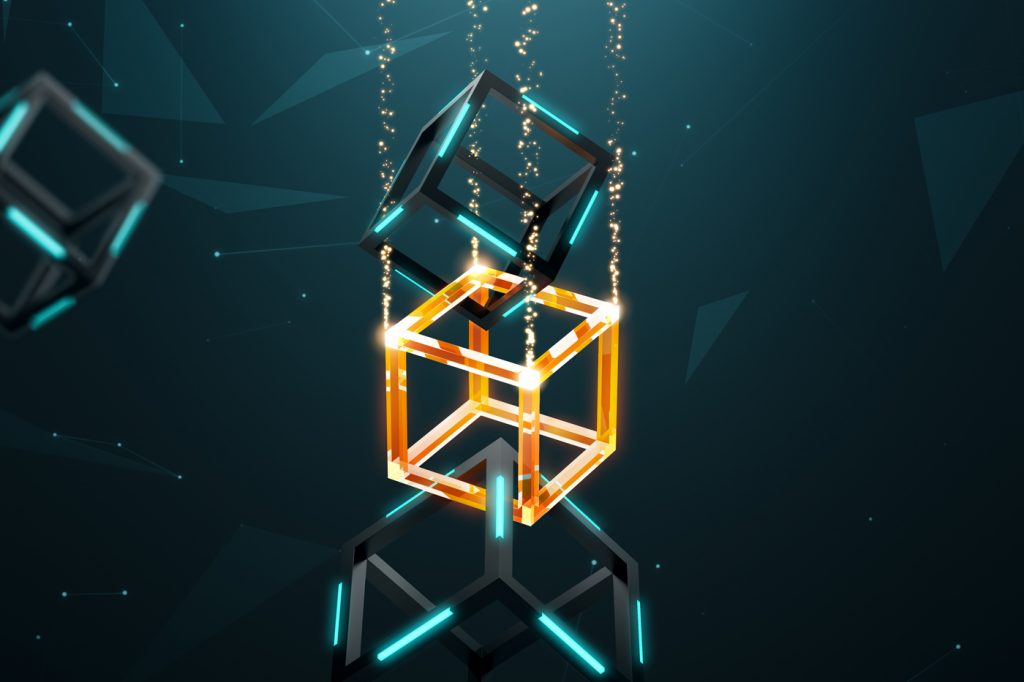Savant or Subverter?
Whichever you choose to believe, this blockchain expert isn’t mincing his words.
Whichever you choose to believe, this blockchain expert isn’t mincing his words.

By Angela Yap Siew Peng
Of the technologies touted to shift the world, blockchain ranks at the top of the list and Roberto Capodieci is at its forefront. The founder and CEO of Blockchain Zoo is recognised as one of the first-movers in the technology and a specialist in lawful interception systems.
In 1980, at age six, Capodieci taught himself to code when his father brought home the world’s first pocket computer, a Sharp PC1210. At age 10, he developed and sold his first video game software. By 1988, he had started his first company by developing a system for optical archiving and document sharing. All this by the ‘ripe old age’ of 14.
Described as possessing “a rare combination of business acumen and deep tech skills” by Matteo Rizzi, Europe’s top 40 most influential fintech figures, Capodieci is set to launch ZooBC, a technology platform currently in beta stage to make blockchain more stable, secure, and scalable for everyone.

Q: Your involvement in software development goes back to the early 1980s, in the days when many people hadn’t even heard of computers. How did your journey in computing evolve from teenage obsession to a near four-decade career?
Actually, my specialisation in consulting for law enforcement agencies (LEAs) began when somebody tried to rope me into international drug dealings.
Back to how it all began. I love mathematics, a trait that runs in the family. When I was young, my father showed me a pocket computer. The machine asked, “What’s your name?” and when I wrote ‘Roberto’ it interacted with me. It would say something nice to me or if I didn’t answer with my name, “I don’t want to talk to you”. I was shocked at how this could happen. Then I saw the code and took the machine away from my father.
This was how I learned to code in BASIC (the programming language in the 1980s). That was my first deep exploration into the ‘brain’ of a computer, and my parents supported this passion, or at least it was like a jump in the dark, because no one thought the computer would be an everyday part of life like it is today. At the time, it was just a toy or something strange.
As a teenager, I ran a profitable business cloning computer games. In the early days, there were no piracy or copyright laws when it came to video games because it was so new. So I was distributing computer games and always had kids coming over to my house to collect their floppy disks. One day, someone approached me and said: “Hey, I heard you have a talent for distributing things. Do you want to become part of selling cocaine?”
I was shocked but he was serious. So I said I’d think about it, then I went to the police and told them that about this guy. They introduced me to the anti-drug department, we did a big drug bust operation, and I became friends with the officers from the anti-drug unit in the northeast of Italy.
Once, when I was with them, the officers were sitting around the table with a highlighter, each with a huge pile of paper. They were checking telephone numbers – who called who – by hand. I said, “Are you crazy? You should use a computer, it is faster.” They didn’t know what I was talking about.
We went to the phone company but the company didn’t have a way to export the information in digital format. So I implemented the first software to digitally collect and analyse phone records so that the police could track who called who, extrapolate the social network of the criminal organisation, identify who was potentially the boss, determine where people slept at night, and even where they would meet using data from cellphone towers.
That was almost 30 years ago. At the time, the work was pioneering. Today, this is normal and it is a huge industry, but back then it was revolutionary. That’s how I began my career as a consultant for LEAs and other government agencies. Since then, I’ve implemented software like optical archiving, documentation management, and big data analysis for both law enforcement and the private sector.

Q: You specialise in mobilising blockchain to wrest financial crime and terrorist activity. Can you give us a practical example of how it works?
Essentially, blockchain can be used to enforce rules in the flow of documentation, guaranteeing that such rules cannot be bypassed or cheated. Offering full transparency and being an incredible tool for auditing, blockchain is a building block for systems of the current phase in the information age.
Yet blockchain is just a tool, not a finished system. It’s another type of database, but a very cool one that allows many parties to work together, to share data, and guarantee the quality of that data.
In the fight against financial crimes, white collar crimes, and corruption, it is paramount to move from paper to digital documents, managed by a system that is impossible to cheat. For example, the approval for the release of information can be pre-programmed in the blockchain, so that it reflects the flow of bureaucracy; there will be no need to make calls to get information. Instead, the chief will release the information using a digital signature and then allow the process – the flow of bureaucracy pre-programmed in the blockchain – to follow.
Cryptography, which is heavily used in blockchain software, also allows encryption, which is a key to privacy and partial disclosure of data. In law enforcement and investigations, sometimes there is secrecy even between an agent and the one sitting next to him. Security protocols require a lot of sealed compartments. Information needs to be highlighted if there is a common trend between two investigations, because you don’t want people to do the work twice, but it must be done in a way that avoids leaks or raising red flags to the wrong person..
When many parties work together, it is paramount to have a platform which guarantees that the flow of paperwork goes smoothly and all the needed steps are done properly. Blockchain systems can be programmed so that the information flow happens only if everyone respects the rules.
Q: What if the gatekeeper, the one who has a master key or access, is compromised?
The question isn’t whether blockchain is automatically safe or not. Whoever implements a blockchain-based system needs to have a solid understanding of its foundations because it doesn’t work like a centralised database. There is the need to architect it properly. When there is illiteracy about the mechanics of a decentralised system, the architects don’t even realise that they’re creating huge problems. Blockchain is not as efficient as a centralised database and it cannot be used or programmed with the same mentality.
Many people don’t know the difference. In a centralised system, to access data, you connect using a username and a password sent over the Internet to the server. The server has a table with usernames and passwords; it checks if those sent by the user match, and if it does, allows the user to view the authorised part of the data in the system.
However, in decentralised mechanics, one cannot use the ‘username and password’ authentication method because without a central server, there would be the need to have the table with all the usernames and passwords in each node of the peer-to-peer network, exposing everybody’s username and password to whoever runs a node. This is not secure at all.
In a decentralised system, users must authenticate themselves using cryptography, i.e. generating a private key (a secret code that is not to be shared with third parties). With the private key, the user then generates a public key and uses it as his/her identity. With the user’s public key, a document, and the user’s cryptographic signature, users (and any properly coded software) can verify the authenticity of the signature.
Q: There is a lot of hype surrounding blockchain. Do you see any negative impact of this in terms of implementation in the real world?
The hype does more damage than good, especially since I find a lot of things such as initial coin offerings [in cryptocurrency] to be unethical. For sure, there is also a lot of confusion between people who claim to know about blockchain and those who actually do. I attend a lot of speeches, some very specific on blockchain, and sometimes people who step on the stage have much more charm and speak better than I do, but what they convey about blockchain and the technology is fundamentally wrong.
We once met a client who had spent millions of dollars implementing a blockchain-based system for his company using software built by architects who made some of the biggest mistakes in decentralised systems. The architects made a server where users registered with their username and password, and then kept all the private keys inside the server, which was coded to automatically post transactions signed on behalf of the user. This goes against the basic principles of decentralisation and blockchain security.
As consultants, we explained to these developers that a user could access the blockchain directly via the peer-to-peer network and bypass their centralised restrictions. As they realised this risk, they decided to move all the nodes of the blockchain into a virtual private network. Only their gateway server could see the nodes but it was not exposed to the Internet. This was a proof-of-work blockchain in a private network. Essentially, the client was paying US$200,000 a month for mining his own blockchain. A huge, useless expense for the client.
However, the client had no idea. All he saw was the user interface: a mobile application and a website. Both were nice and worked properly. Yet, as he was using this introduction of blockchain as part of his company’s business model and marketing, it exposed him to potentially bad publicity as anyone with the minimum knowledge of blockchain would’ve seen the architecture and thought: “Oh my god!”.
We ended up training the developers of this software house about the correct fundamentals and philosophy of blockchain and decentralised systems. This is the kind of work we do at Blockchain Zoo.
While blockchain technology is powerful and brings a lot of innovation, it is very important to be sure that developers understand the requirements well before stepping into implementation.
Q: Where do you see the future of tech and decentralised systems like blockchain?
Currently, in a regular blockchain, when a transaction is sent to you, you receive it. This has risks. For instance, if I have an illegal source of money and I send it to you, the transaction is accepted and you are at the losing end because you could not accept or reject that transaction.
One of the big things that we’re doing with blockchain is that you can set your account to refuse incoming transactions. That sounds like a simple thing but it’s missing almost everywhere unless you code it into a smart contract.

Until I started Blockchain Zoo with nine other partners, there was a lot of talk about blockchain but few opportunities where people could actually sit and do it for real. The vision is to create a centre for actual blockchain knowledge and provide correct education and implementation globally. Now, after many years of tests and discovery, we’re implementing our own technology platform, a project called ZooBC. For instance, let’s say a consortium of hospitals want to use blockchain for their medical records, they can now licence the tech from us and start their own blockchain for that instead of building smart contracts on their own.
Ultimately, blockchain should be this underlying technology that enables everything, and yet users shouldn’t even know that there is a blockchain behind what they’re doing.
Q: In what direction has the outlook for blockchain evolved since the pandemic – has it accelerated or have new applications emerged? Has it impacted your own views on where the future lies for tech in finance?
The pandemic has made blockchain much more needed than it was before. Remote work, for example, requires more auditing, guarantee on requests, documentation flow and tracking, and payment systems than a regular in-office job.
It is interesting how, many years ago, when the first decentralised file sharing system, Torrent, came out, the majors of movie and music, rather than recognising an innovative technology that could have allowed them to sell music and movies in every corner of the planet, got scared and lobbied governments to make an example of a few “pirates” to scare others from using a technology they couldn’t stop. Only Apple entered the market of online music, with huge difficulties.
Likewise, financial institutions had mixed reactions to bitcoin. Some got scared, some lobbied governments to make it illegal, and others surfed the wave of innovation, adopting the technology for their own needs to eventually offer it as a service to their clients. In recent news, DBS, the largest bank in Singapore, is opening its own crypto exchange for institutional clients.
So, in my opinion, we are moving toward decentralisation at quite a high speed, and blockchain is a key technology that will have wide adoption, mostly outside of the cryptocurrency world.
Angela Yap Siew Peng is a multiaward-winning entrepreneur, author, and writer. She is Director and Founder of Akasaa, a boutique content development firm with presence in Malaysia, Singapore, and the UK and holds a BSc (Hons) Economics.